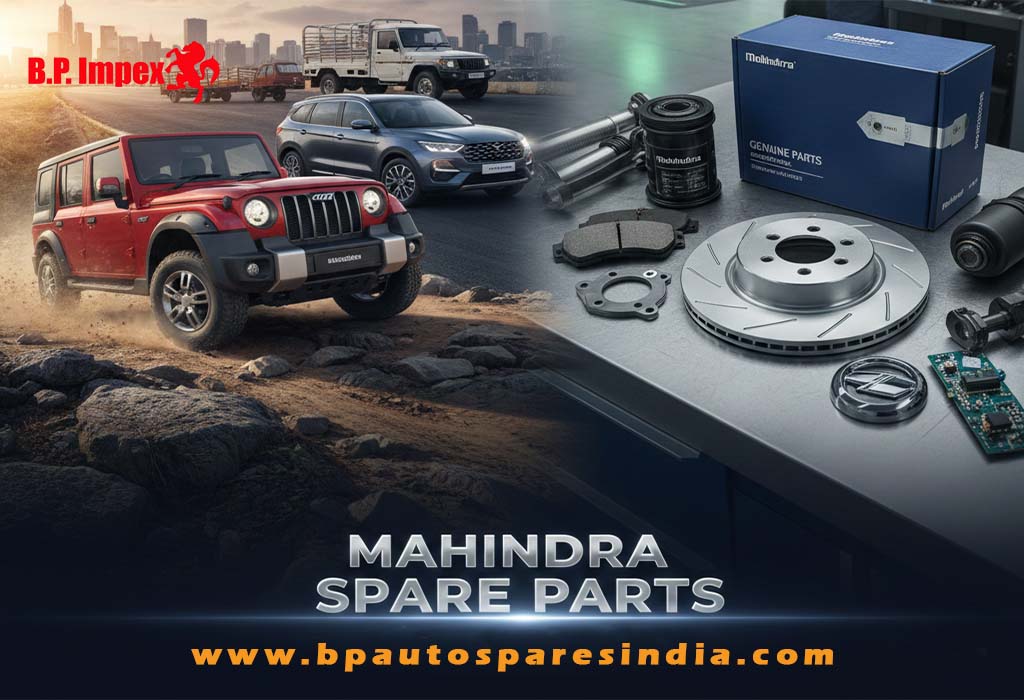The car part experts of one of the leading suppliers of Tata Telcoline Parts explain by breaking up the word Transaxle and driving its true meaning. Basically, the word Transaxle is made with the combination of two words “transmission” and “driven axle” giving us the glimpse of its true meaning and what it actually does.
What is a Transaxle?
A Transaxle is a very quintessential part of your vehicle. It is a complex machine that connects the functionalities of a transmission and final drive components like a differential. That is, Transaxles are highly proficient and capable of driving the axles without the assistance of any additional car component. A Transaxle is particularly useful in front-wheel-drive cars, where the constant velocity axles can be attached directly to the transmission control unit. You’ll also find Transaxles in front-engine rear-wheel-drive applications.
How Does a Transaxle Works?
A Transaxle is engineered and machined to transmit power from the engine to the drive wheel of the car via the driven axles, also helping the drivers change the gearing ratio. Referring to the likes of British English, a “transmission” is basically a word that takes into account the various components in the drive train, which includes both the transmission and the differential. Now talking about the actual difference between the Transaxle and the British English version of the word “transmission” is that a Transaxle is capable of holding both a transmission and a differential in a single housing.
Find More Auto Spare Parts List
What are the various components of Transaxle?
Now the composition of a transaxle and the parts it includes largely depends on the design, make and model of a vehicle that can be very different depending on the brand you choose. But there are few components that are common when talking about the structure of the Transaxle such as a differential and a transmission. Some of the other major components that Transaxle includes are
• Bearings
• Gears and clutches
• Shafts: counter, idler, or input
Read Also: Samsung and HARMAN Together Unveil Digital Cockpit Platform for Autonomous Cars
Now, a transaxle boasts varied amounts and configurations of these said components than either a transmission or a differential individually boasts. Along with allowing the driver to change gear ratios, which is mainly a function of the transmission, the transaxle is also responsible for distributing torque to the drive wheels.
What causes Transaxle Failure?
A Transaxle is made of a transmission, differential, along with other 5 components we’ve mentioned above. So a slight malfunctioning or failing of the any of the 7 components can lead to a Transaxle failure. So keep your eyes and nose open for the tell-tale signs of Transaxle Failure.
The symptoms of Transaxle Failure includes,
• Rotten or overused transmission fluid
• Slithering or skidding gears
• Transmission noise (when in neutral)
• Excessive jostling on shifting gears
• Tug when coasting
• Excessive noise when starting the vehicle
Quick Steps to Remove Transaxle
Read Also: Let’s Talk About Electric Superchargers
1. First you need to get rid of the battery tray.
2. Then put aside the shift control cable bracket.
3. Now it’s time dislodge the electrical connector from the input speed sensor.
4. Then, take the turn of disconnecting the electrical connectors from the transaxle range switch.
5. Remove the wire harness from the transaxle range switch.
6. Remove the nut securing the battery negative cable and wire harness ground to the transaxle stud.
7. Remove the battery negative cable and wire harness ground from the transaxle stud.
8. Now, disengage the electrical connector from the output speed sensor.
9. Unscrew the required nuts and disconnect fuel line retaining clip from the transaxle.
10. Unyoke the transaxle vent tube.
11. Put aside the wire harness, vent hose, and shift cable up away from the transaxle in a spate tray.
12. Remove the upper 4 bolts that connect transaxle-to-engine.
13. Tether together the radiator, air conditioning condenser and fan module assembly to the upper radiator support so that the assembly stays with the vehicle when the frame and drive train are removed.
14. Remove the left hand transaxle bolts that connect mount-to-transaxle.
15. Remove the left hand transaxle bolts that connect mount-to-side rail.
16. Now unfasten the left hand transaxle mount from the vehicle entirely.
17. Using the jack raise the vehicle enough for you to slip under it and place jack stands at the rear-end wheels.
18. Pull out both the front wheels.
19. As soon as the front wheels are out, detach the left and right side engine splash shields.
20. Withdraw the steering intermediate shaft pinch bolt and pull out the bolt completely.
21. Uncouple the steering intermediate shaft from the steering gear.
22. Now from the steering knuckles, pull out the right and left outer tie rod ends.
23. From the stabilizer shaft, take out the right and left stabilizer shaft links.
24. Pull out the right and left lower ball joints from the steering knuckles.
25. Unsecure the front bumper fascia air deflector.
26. Let all the transaxle fluid drain into a pan.
27. Unsecure the transaxle oil cooler lines from the transaxle.
28. Put in the collet piece of tool J 45201 into the cooler line seal.
29. Put in the forcing screw piece of the J 45201 into the collet.
30. Tighten the forcing screw until it’s completely snug with no room for extra rotating.
31. Tighten the collar piece of J 45201 onto the collet until snug.
32. Rotate the collar clockwise so that you can remove the cooler line seal.
33. Let go of the cooler line seal.
34. Thoroughly wipe clean the case bores for the cooler line seals with a clean piece of cloth.
35. Take off the engine-to-transaxle brace bolts along with the brace.
36. Take away the starter motor.
37. Rotate the crankshaft balancer bolt clockwise so that you can gain access all the way to the torque converter-to-flywheel bolts through the starter motor hole.
38. Remove the torque bolts that connects the converter-to-flywheel
39. Put aside the front engine mount.
40. Now, remove the through bolt from the rear transaxle mount and bracket.
41. Position a universal frame support fixture under the frame.
42. Now, slowly lower the vehicle until the frame comes into contact with the frame support fixture.
43. Unsecure the frame-to-body bolts and let go of all the bolts.
44. Raise the vehicle slightly up away from the frame so that you can remove the frame from under the vehicle.
45. Disarticulate the right and left half shafts from the intermediate shaft and transaxle.
Keep them both out of the way.
46. Separate the intermediate shaft.
47. Put the transaxle on a suitable transaxle jack.
48. Remove the 4 lower bolts that connect transaxle-to-engine.
49. Glissade the transaxle away from the engine
50. If it is engineered with a drive axle seal dust cover, remove it too and do not replace it.
51. Now put down the transaxle away from the vehicle.
In case you want to gain an in-depth knowledge of the transaxle, you can contact the auto parts experts of the largest Exporters of Auto Parts in India, BP Auto Spares India or can look for an OEM quality transaxle from our catalog.







Leave a Reply